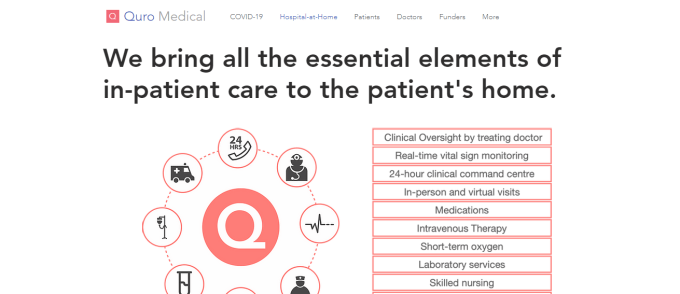News: Boasting menus from chefs at French Laundry, vegetarian mealkit startup Simple Feast hits the U.S.
Offering a respite from processed foods for the richest 20% of Americans, Simple Feast has landed on U.S. shores with a mission to expand its presence on the back of $45 million in financing from investors. The European startup is looking to take a page from the shouty LIVEKINDLY Collective playbook and take on the
Offering a respite from processed foods for the richest 20% of Americans, Simple Feast has landed on U.S. shores with a mission to expand its presence on the back of $45 million in financing from investors.
The European startup is looking to take a page from the shouty LIVEKINDLY Collective playbook and take on the U.S. market with gourmet prepared meals that come with a gourmet price tag and a mission to make Americans eat less meat by proffering more tasty and delicious vegetarian options.
It’s a strategy that netted LIVEKINDLY Collective’s business $335 million in a recent round of funding, making it one of the most well capitalized new entrants in the vegetarian food brand category.
“There’s a general health problem that’s coming mostly from what we put in our mouth,” said Jakob Jønck, the company’s co-founder and chief executive.
For folks in the U.S. who can afford it, Simple Feast is offering packaged meal kits with menus developed by chefs from some of the world’s highest end restaurants — place like French Laundry in California or Noma in Norway, where meals can run roughly $350 per-person.
A selection of three prepared meals for two-to-three people will run customers around $98 per-week and for a family of four or five that number jumps to $159 per-week.
Simple Feast’s foray into the US market represents just a small portion of the company’s total offerings. In the Nordic region the company offers about 30 different products all targeting people who want to reduce the amount of meat they eat.
Investors certainly love the company’s offering, because, as Jønck says, the products probably represent the highest margin in the meal kit category.
Those financiers include firms like the European venture capitalists Balderton Capital and Kinnevik, and New York-based 14W.
As for the company’s customers, they’re mostly moms with kids whose income puts them in the top 20% of the population. While they may be far more wealthy than the hoi polloi, Jønck said they still suffer from exposure to the worst aspects of America’s industrial food machine — highly processed foods that are causing an explosion in chronic health conditions like diabetes and obesity.
Data from places like the Rand Institute indicate that in America, the burden of insufficient nutrition and the chronic conditions that stem from that are disproportionately affecting low income and middle income families.
Health is a problem in the U.S. with $794 billion per year estimated to be lost in productivity between 2016 and 2030. An article from HealthAffairs cited research from the Joint Center for Political and Economic Studies estimates stating that health inequities and premature death cost the US economy $309.3 billion a year.
However, these costs are primarily born by the poorest Americans, particularly minorities. “People of color face higher rates of diabetes, obesity, stroke, heart disease, and cancer than whites,” the HealthAffairs article says.
Simple Feast is working to correct that, says Jønck. The company’s European packaged prepared meals available in retail stores cost around $15, he said, and the company will offer salaries far above the minimum wage in the U.S. to do its part in ameliorating some of the wealth disparity in the country.
“This is a general play on an industry that needs to change for the ground up. This system needs to change,” Jønck said.




